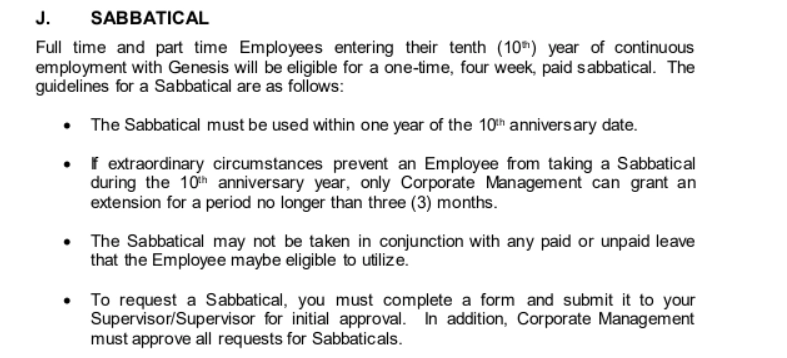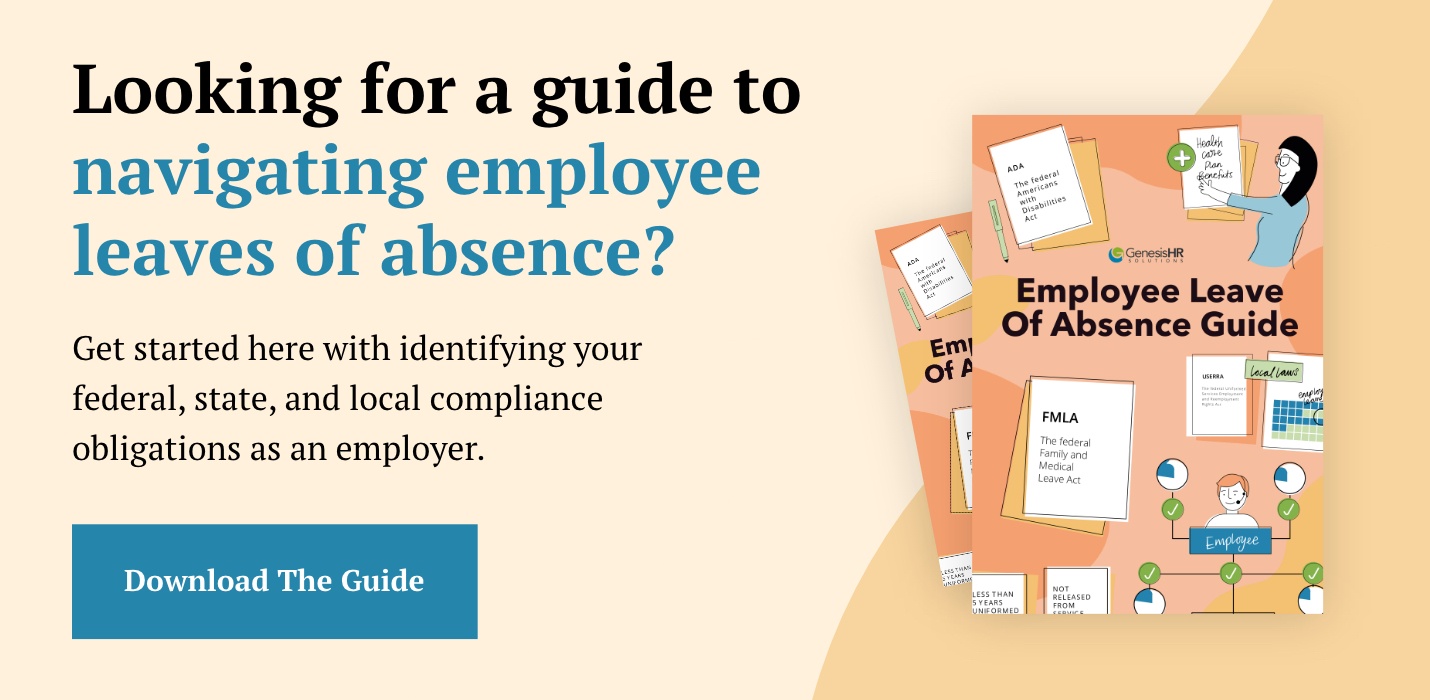As employers and HR departments vie for the best and most talented employees—both to hire and retain—new and updated types of benefits are being added to benefits lists.
One benefit I’ve seen offered by more and more employers is a sabbatical leave for tenured employees. I think offering sabbatical leave is an excellent idea for both employee and employer—and a benefit more employers should offer to employees who have earned it!
What is a sabbatical leave?
A sabbatical is paid leave that allows an employee the ability to take a designated period of leave for a specified number of years worked.
The difference between a sabbatical vs. a leave of absence, which is a similar concept, is that a leave of absence is typically designated for medical reasons or for an employee to care for a family member with an illness or need. With a sabbatical, employees do not need to use their regular paid time off balance (vacation).
In contrast, a sabbatical leave is a benefit that does not require illness and is not necessitated by need. Typically, sabbatical leaves allow employees time away from work to focus on creative endeavors that are important to them both personally and professionally so that new ideas can continue to be generated. The hope is that they will return to work refreshed and rejuvenated, avoiding burnout.
Wondering about your compliance obligations related to employee leaves of absence?
Download our free guide to get the lowdown on federal, state, and local laws.
9 Big Benefits Of Sabbatical Leaves (For Both Employees & Employers)
- Sabbaticals allow employees to explore other interests. This experience fosters creativity upon their return to work.
- Sabbatical leaves provide a respite for long-time employees who may have dedicated significant time and mental energy to an organization. Employees return feeling replenished after their leave because they can fully enjoy the time, knowing they have job security when they return.
- Sabbaticals help alleviate burnout. Studies show prolonged breaks, like those offered by sabbaticals, are one way to address chronic employee burnout.
- Sabbaticals may lower stress levels in employees and can even potentially lower healthcare costs for employees and employers. From an employer perspective, healthcare costs are one of the top line items in a budget. Anything that can negate those rising costs is something to consider; the amount paid out for an employee sabbatical is considerably lower than the costs of healthcare when you also consider the array of benefits to both worker and company.
- Sabbaticals allow employees time to clarify how they can contribute to their employers in new ways. Taking time away from daily work, outside of the typical office space and without a looming task list, is one of the best ways employees can ideate. Allowing them time to do this on sabbatical could potentially provide breakthroughs that wouldn’t otherwise happen.
- Coworkers learn to be more flexible by covering for others. While it doesn’t necessarily sound like an exciting benefit, it’s an important one for employers. Sabbaticals reveal an employee’s role and also help cross-train skills with employees who are covering for the person on sabbatical.
- Sabbaticals give other employees opportunities to shine. When employees are on sabbatical, there is a chance for those who are covering to rise to the task and potentially show leadership skills that may not have been visible or able to be utilized.
- Sabbaticals improve employee morale. This seems obvious—of course time off would make you feel more valued as an employee—but seeing quantitative evidence is helpful. As reported by SHRM, consulting firm SAPRO’s sabbatical program resulted in an employee engagement score of 83% (13% above the industry average). Additionally, the firm’s turnover rate dropped to less than 5%, which is 20% lower than the industry average. While it’s just a single case study, these numbers are similar to other sabbatical program data I’ve seen.
- Sabbaticals improve an employer’s brand. In a world where all employers are racing to provide benefits that matter to their employees (current and potential), sabbaticals offer a benefit that many others can’t: They reward longstanding employees for a job well done, helping to increase employee retention. It is also appealing for a new hire to see a generous sabbatical program and know they have something to look forward to after several years with a company.
How To Set Up A Sabbatical Leave Program
In order to create a sabbatical leave program for your company, your HR team first needs to establish eligibility guidelines and procedures for the sabbatical. There are no government rules pertaining to sabbaticals, but employers must make sure they design a program that caters to their business.
Here are the best practices our GenesisHR team follows when creating and implementing sabbatical leave programs for our clients.
- Determine when employees are eligible for sabbaticals. At GenesisHR, we recommend that only employees who have been with the company for a minimum of five years should be eligible. Personally, I prefer 10 years, because I think we see significant job-hopping happening at the five-year mark, whereas it’s much rarer to be with an organization for 10 years. We want employees to work toward their sabbatical and not have to face significant turnover when they return.
- Determine whether or not sabbaticals are paid. Partial pay, full pay, or no pay are all options.
- Determine how often sabbaticals will be allowed after the first one.
- Determine the amount of notice required before taking sabbatical leave.
- Determine what you will require for sabbatical leave requests. In some companies, eligible employees applying for sabbaticals are required to submit a letter to their supervisor describing the reason for the sabbatical and anticipated activities. Some companies don’t require this step.
- Determining the sabbatical’s length of time. I recommend at least a month’s sabbatical, with a minimum of two weeks. Keep in mind—there’s no one-size-fits-all duration, and you’ll have to tailor your numbers to your industry.
Bottom line: Offer a sabbatical leave program if you can.
I absolutely recommend offering sabbaticals—in fact, our team believes in it so much that we offer our own sabbatical leave program at GenesisHR!

If you aren’t sure where to start, or you’d like expert guidance to make sure you’re not missing any important component of managing sabbatical leaves, let us help you. At GenesisHR, we’re experts in all things leave—from FMLA to PTO and even niche benefits like sabbaticals. We’ve got you covered when it comes to creating programs that will help you recruit and retain a solid workforce, while still being profitable and compliant.





